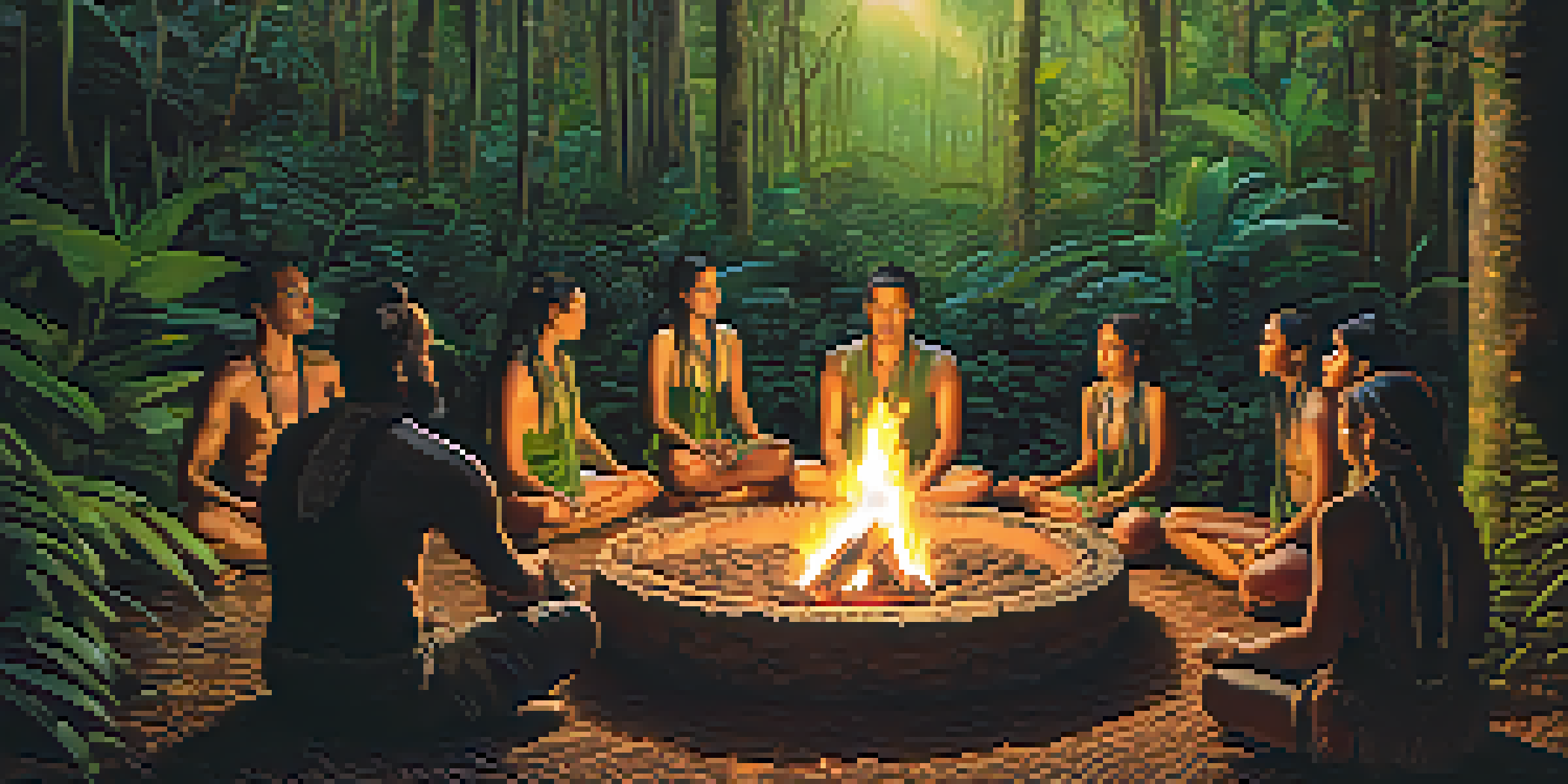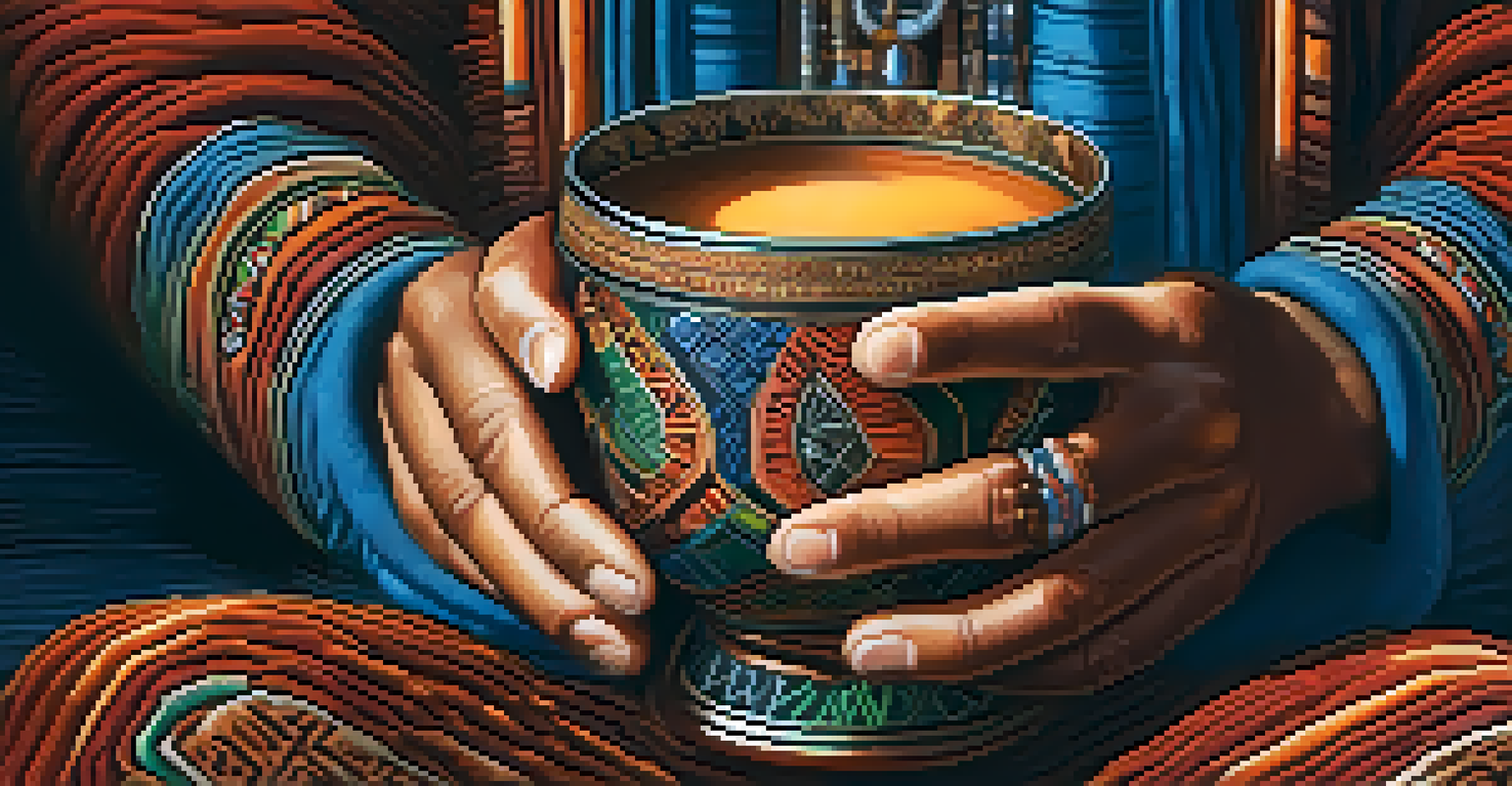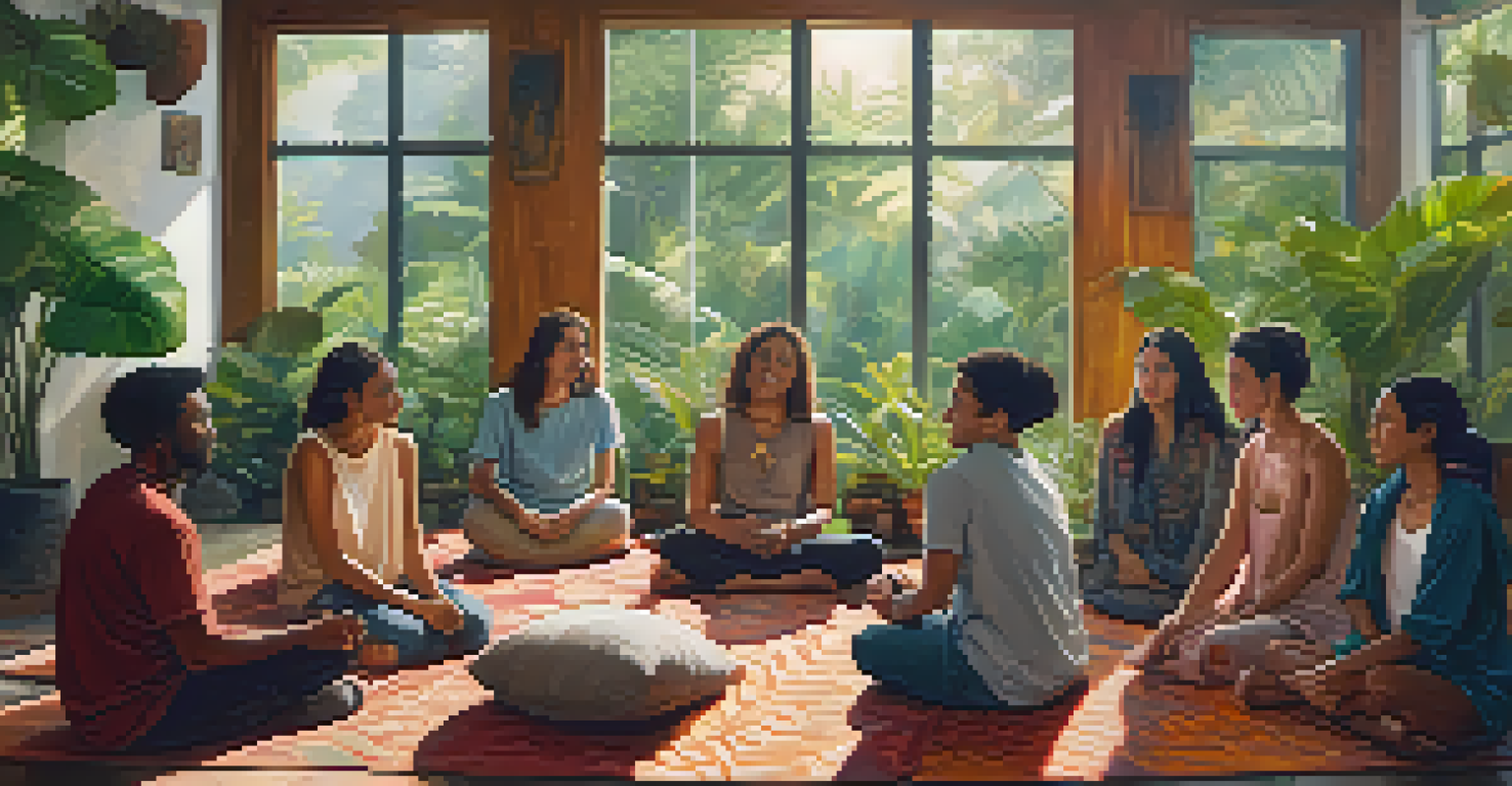The Impact of Group Intentions on Ayahuasca Experiences

Understanding Ayahuasca and Its Cultural Significance
Ayahuasca is a powerful plant medicine originating from the Amazon, often used in traditional ceremonies for healing and spiritual exploration. It combines the Banisteriopsis caapi vine and the Psychotria viridis leaf, creating a brew known for its hallucinogenic properties. In many indigenous cultures, Ayahuasca is not merely a tool for personal insight but a sacred ritual that connects participants with their ancestors and the spirit world.
The journey of a thousand miles begins with one step.
The cultural significance of Ayahuasca ceremonies underscores the importance of community and shared experiences. These gatherings often involve participants setting collective intentions, which can amplify the effects of the medicine. This communal aspect fosters a deeper sense of connection among participants, enhancing the overall experience.
As Ayahuasca gains popularity worldwide, understanding its cultural roots becomes essential. Those who approach it purely as a recreational drug miss the profound spiritual and communal dimensions that are integral to its traditional use. Thus, recognizing the importance of group intentions can significantly impact the quality and depth of the Ayahuasca experience.
The Role of Intentions in Ayahuasca Ceremonies
Intentions set before an Ayahuasca ceremony serve as guiding stars for participants, shaping their experiences throughout the journey. When individuals come together with a shared purpose—be it healing, personal growth, or spiritual discovery—they create a powerful collective energy. This synergy can enhance the Ayahuasca experience, making it more profound and transformative.

Research indicates that intention can influence not only personal insights but also emotional and psychological outcomes. For example, a group focused on healing may collectively manifest a stronger sense of relief and release during the ceremony. This communal focus can help participants feel supported, allowing them to explore deeper emotional landscapes together.
Importance of Intentions in Ceremonies
Setting genuine and collective intentions enhances the Ayahuasca experience, fostering deeper connections and personal insights.
However, it's important to note that intentions should be genuine and heartfelt. Superficial or insincere intentions can lead to disjointed experiences, diminishing the potential benefits of the ceremony. Therefore, taking the time to reflect on and share intentions within the group is crucial for fostering a cohesive atmosphere.
How Group Dynamics Influence Individual Experiences
The dynamics within a group can significantly affect individual experiences during Ayahuasca ceremonies. The energy of the group, whether positive or negative, can resonate with each participant, shaping their personal journeys. For instance, a supportive and open group environment may encourage individuals to confront their fears and traumas with greater ease.
We are stronger together than we are alone.
Conversely, if the group is filled with tension or negative energy, it can create barriers for participants. Individuals may find it challenging to connect with the medicine or experience heightened anxiety instead. This illustrates the importance of cultivating a harmonious group atmosphere, as it can either bolster or hinder personal growth.
Facilitators often play a key role in managing group dynamics, ensuring that everyone feels safe and supported. By fostering an environment of trust and openness, they can help participants navigate their experiences more effectively. This delicate balance highlights how interconnected individual and group experiences truly are in Ayahuasca ceremonies.
Shared Experiences: Bonding Through Ayahuasca
One of the remarkable aspects of Ayahuasca ceremonies is the strong bonds that can form between participants. Sharing such profound experiences often leads to a deeper sense of camaraderie and understanding. As individuals navigate their journeys together, they create a tapestry of shared stories and insights that can last long after the ceremony ends.
These shared experiences can serve as a powerful source of support, encouraging participants to continue their personal growth outside the ceremony. Friends made through Ayahuasca can provide accountability and encouragement as they integrate their experiences into everyday life. This ongoing connection can be crucial for maintaining the insights gained during the ceremony.
Group Dynamics Shape Individual Journeys
The energy and support within a group significantly influence how participants navigate their personal experiences during Ayahuasca ceremonies.
Moreover, the act of sharing vulnerable moments fosters empathy and compassion among participants. This emotional connection can help heal not only individual wounds but also collective ones, reinforcing the idea that we are all in this together. In essence, the bonds formed during Ayahuasca ceremonies can create lasting friendships and support networks.
The Influence of Cultural Context on Group Intentions
Cultural context plays an essential role in shaping group intentions during Ayahuasca ceremonies. Different traditions may emphasize various aspects of the experience, influencing the collective mindset. For instance, some indigenous practices focus heavily on ancestral connections, while others may prioritize personal healing or community well-being.
This cultural backdrop can guide participants in setting intentions that resonate with the group's ethos. When individuals understand and respect the cultural significance of their ceremony, they are more likely to align their intentions with those of the group. This alignment can lead to a more harmonious and impactful experience.
Additionally, cultural context can inform the ceremonial practices themselves, from chants to rituals. These elements provide a framework that supports the group's collective intention, making the experience richer and more meaningful. Ultimately, recognizing the interplay between culture and intention can deepen participants' understanding of their journeys.
Challenges of Group Intentions in Ayahuasca Experiences
While group intentions can enhance Ayahuasca experiences, they may also present challenges. Diverging intentions among participants can create confusion or tension, detracting from the overall experience. For example, a participant seeking personal healing may feel out of sync with a group focused on collective empowerment, leading to feelings of isolation.
Additionally, the pressure to conform to group intentions can stifle individual exploration. Participants may hesitate to express their true desires or concerns, fearing they might disrupt the group dynamic. This situation underscores the importance of maintaining a balance between individual and collective intentions during ceremonies.
Integration is Key Post-Ceremony
Reflecting on and sharing experiences after the ceremony helps solidify bonds and translate insights into actionable personal growth.
Facilitators must be attentive to these challenges, encouraging open communication and flexibility among participants. By creating a space where individual needs are valued alongside group intentions, they can help ensure a more fulfilling experience for everyone involved. Addressing these challenges head-on can foster a more inclusive and enriching Ayahuasca journey.
Integrating Group Intentions Post-Ceremony
The journey doesn't end when the Ayahuasca ceremony concludes; integrating the experiences and group intentions afterward is crucial. Participants are encouraged to reflect on their journeys, sharing insights and lessons learned with one another. This post-ceremony dialogue can help solidify the bonds formed during the experience and reinforce the shared intentions.
Integration circles are often organized as a way for participants to discuss their experiences in a supportive environment. These gatherings allow individuals to express their feelings, process their insights, and explore how to incorporate the lessons learned into their daily lives. Such discussions can also help identify any lingering challenges that may need attention.

Ultimately, the process of integration is about translating the wisdom gained during the ceremony into actionable steps for personal growth. By maintaining the connections formed with fellow participants and continuing to explore shared intentions, individuals can cultivate lasting transformation in their lives. This ongoing journey highlights the powerful impact of group intentions in the Ayahuasca experience.